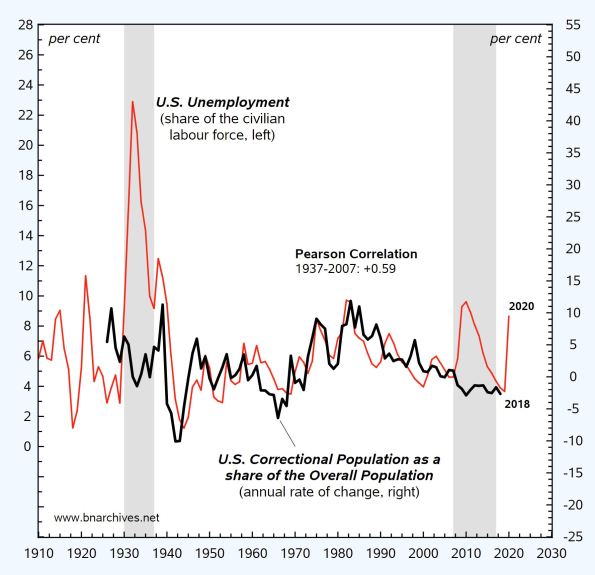From Shimshon Bichler & Jonathan Nitzan For much of the 20th and early 21st centuries, U.S. unemployment and incarceration went hand in hand. This is how the rulers disciplined their subjects. But during the Great Depression and Great Recession, the link broke, if only temporarily. The following figure shows these patterns. Part of the rational for this two-pronged discipline is illustrated in the next figure: since the Second World War, the income share of the top 10% of the U.S. population has been tightly correlated with the country’s correctional population, although this correlation seems to have broken recently. For more, see our 2004 paper ‘No Way Out’ bnarchives.yorku.ca/391/
Topics:
Editor considers the following as important: Uncategorized
This could be interesting, too:
tom writes The Ukraine war and Europe’s deepening march of folly
Stavros Mavroudeas writes CfP of Marxist Macroeconomic Modelling workgroup – 18th WAPE Forum, Istanbul August 6-8, 2025
Lars Pålsson Syll writes The pretence-of-knowledge syndrome
Dean Baker writes Crypto and Donald Trump’s strategic baseball card reserve
from Shimshon Bichler & Jonathan Nitzan
For much of the 20th and early 21st centuries, U.S. unemployment and incarceration went hand in hand. This is how the rulers disciplined their subjects. But during the Great Depression and Great Recession, the link broke, if only temporarily. The following figure shows these patterns.

Part of the rational for this two-pronged discipline is illustrated in the next figure: since the Second World War, the income share of the top 10% of the U.S. population has been tightly correlated with the country’s correctional population, although this correlation seems to have broken recently.

For more, see our 2004 paper ‘No Way Out’ bnarchives.yorku.ca/391/
